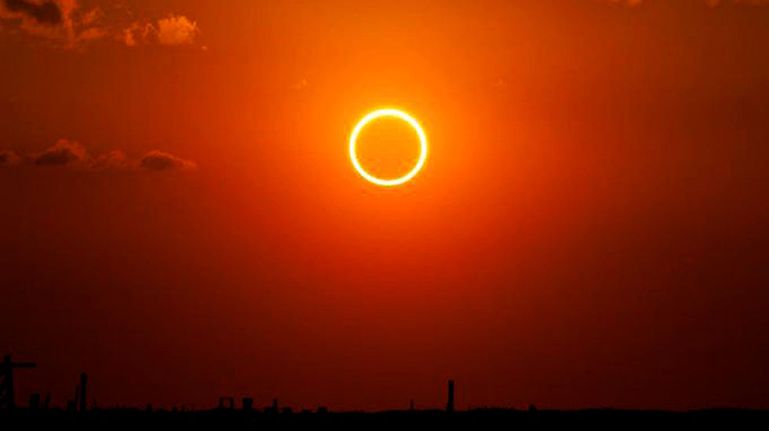Total eclipse! No sun, no moon!
All dark amidst the blaze of noon!
Total Eclipse, the aria from Handel’s 1743 oratorio, Samson, isn’t directly referencing the kind of awe-inspiring celestial dance many of us will experience today. The words, taken from John Milton’s tragic closet drama, are Samson’s anguished lament at losing his eye sight. (Milton and Handel both went blind. According to some accounts, this aria moved Handel to tears in the final years of his life).
Samson, one of the last judges of Israel, derives supernatural strength from his uncut hair. He divulges the secret of his powers to his Philistine wife, Dalila, who betrays him by shearing his hair off while he is sleeping. Samson is captured by the Philistines, blinded and imprisoned. In Total Eclipse we get a sense of the stinging humiliation of Samson’s fall, and perhaps his feelings of self-betrayal. Stripped of his powers, he is rendered emotionally naked.
The introduction’s single musical line seems to be groping in never-ending darkness. Then, for Samson’s opening words, even this sparse accompaniment evaporates and we’re left, suddenly, with the ultimate lonely desolation.
Here is tenor Marc LeBroq’s performance:
Handel’s music has a unique ability to turn the darkest tragedy into euphoric triumph. At the end of the final act of Samson, Let the Bright Seraphim summons the celestial angels, seraphim and cherubim with the sound of trumpet calls:
Recordings
- Handel: Samson, HWV 57, Barockorchester Der Klosterkonzerte, David Thomas, Marc Lebrocq, Michael Chance, Raimund Nolte, Sinead Pratschke iTunes
- Handel: Let the Bright Seraphim, Renée Fleming, Orchestra of the Age of Enlightenment, Harry Bicket iTunes
- Jon Vickers’ performance of Total Eclipse
- For more music appropriate for today’s solar eclipse here are two additional posts from The Listeners’ Club archive: Five Musical Sunrises, Musica Celestis: Three Pieces Inspired by the Harmony of the Spheres

